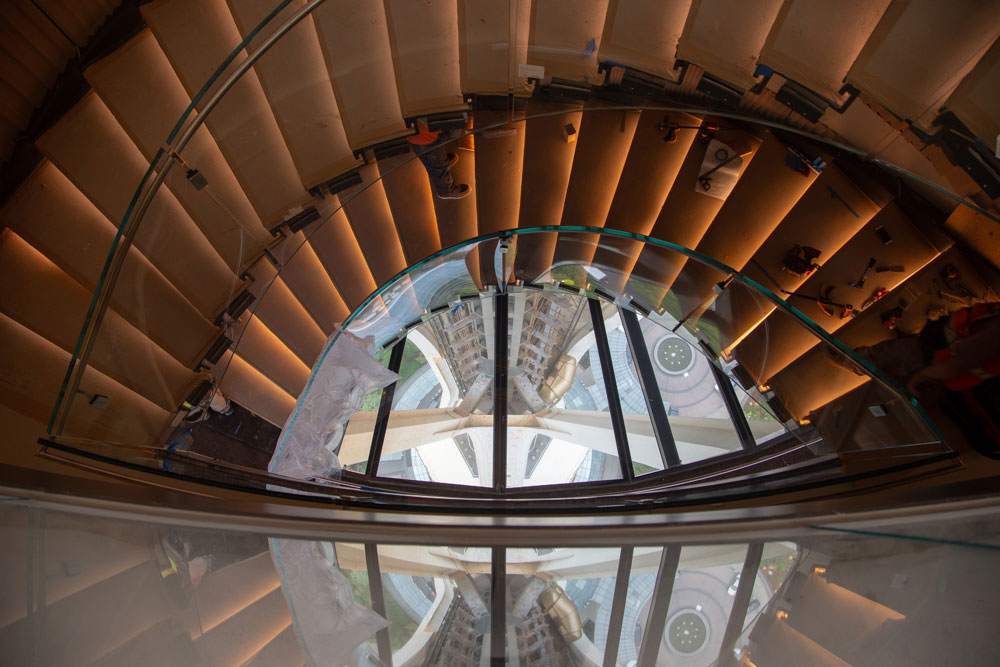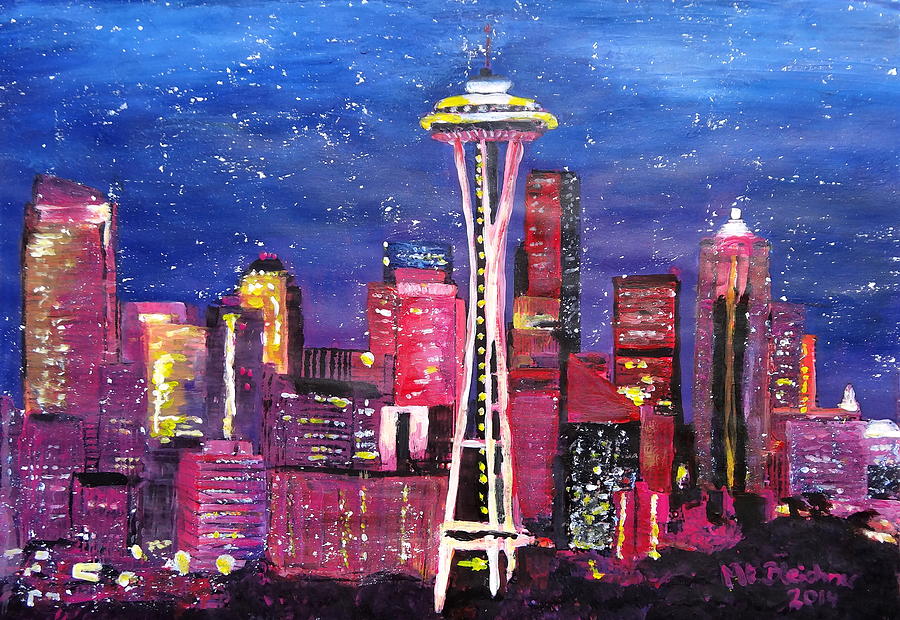
The structure comprises a steel tripod, with each of the three legs pinched just above the middle of their height and topped by a multi-level tophouse reminiscent of a flying saucer. ImageCourtesy of Seattle Municipal Archives (Public Domain)įrom this massive foundation arose a slender tower whose skyward growth did not end until it had reached 605 feet (184.4 meters) tall. Save this picture! The Space Needle under construction before its opening in April 1962. In spite of the Space Needle’s slightly top-heavy appearance, its center of gravity is only 5 feet (1.5 meters) above the ground. The resulting foundation was so heavy that it weighed as much as the tower that sprouted from it. This concrete pour would be the largest attempted in the West to that date: over the course of an entire day, a total of 467 cement trucks worked to fill the gaping hole. The first step was to dig a hole 30 feet (9 meters) deep and 120 feet (36.6 meters) across into which the building’s foundation could be poured. With the deadline looming, construction proceeded rapidly. Eventually, a 14,400 square foot (1337.8 square meter) site was found, and construction could finally begin with only a year left before the beginning of the Exposition. Although the Space Needle was to be the exposition’s greatest attraction, its construction was not financed by the city the investors, therefore, had to purchase a lot within the fairgrounds. The next six months were spent securing a lot upon which to build the tower. ImageCourtesy of Flickr user James Vaughan (CC BY-NC-SA 2.0) Save this picture! A 1962 cutaway drawing of the Space Needle's tophouse. The final design was decided upon only a year and a half before the fair’s intended opening in 1962. One member in particular, Victor Steinbrueck, was responsible for the tripod support shaft its double-decked crown was concocted by member John Ridley. Approximately a dozen designers contributed to the project, each recruited into a team by Graham for the task. Early versions of the Space Needle resembled an enormous balloon, either tethered to the ground or sitting atop a column it was Graham who turned the sphere into a saucer, a form perhaps more fitting in light of the tower’s Space Age inspiration.

The collaboration between Carlson and Graham resulted in substantial revisions to the initial concept.

In response, one of the officials suggested that Carlson enlist architect John Graham, Jr. He wasted no time in sketching out his vision of this tower on a number of postcards sent to other fair officials while rather crudely detailed, the slender form of his concept drawing was clearly inspired by the Fernsehturm. When Seattle World’s Fair Commission chairman Eddie Carlson dined in a restaurant in Stuttgart’s Fernsehturm in 1959, he quickly decided that the Century 21 Exposition required a similar landmark attraction. The idea for the Space Needle itself came not from the Soviet Union, but from Germany.

ImageCourtesy of Seattle Municipal Archives (Public Domain) Save this picture! This sketched rendering of the Space Needle dates to April 1961 – one year before its opening. It was under this mandate that the federal government selected Seattle as the host for the country’s next World’s Fair one which, it was hoped, would demonstrate American technological superiority – both on Earth and beyond. The launch of the Soviet satellite Sputnik in October of 1957 was an undeniable challenge to a United States in the midst of the Cold War, necessitating a timely and emphatic response. Impetus for the 1962 World’s Fair, as it was colloquially known, did not come only from Seattle itself. Boeing, which had made its headquarters in the city in 1910, was also one of the largest employers the area, but the threat of economic downturns-and the layoffs that followed-drove both local business owners and city officials to begin brainstorming a way to entice other companies to settle in the city. Shipping between the western United States and other countries along the Pacific Rim frequently passed through Seattle, but the growing popularity of the jet airplane allowed for shipments to cross the ocean without ever passing through the region.

At the time, the city depended on two primary sources of employment: maritime trade and that of aircraft manufacture (the Boeing Corporation). Seattle was particularly fragile as the Space Age dawned. Sustainability and Performance in Architecture The Future of Architectural Visualization


 0 kommentar(er)
0 kommentar(er)
